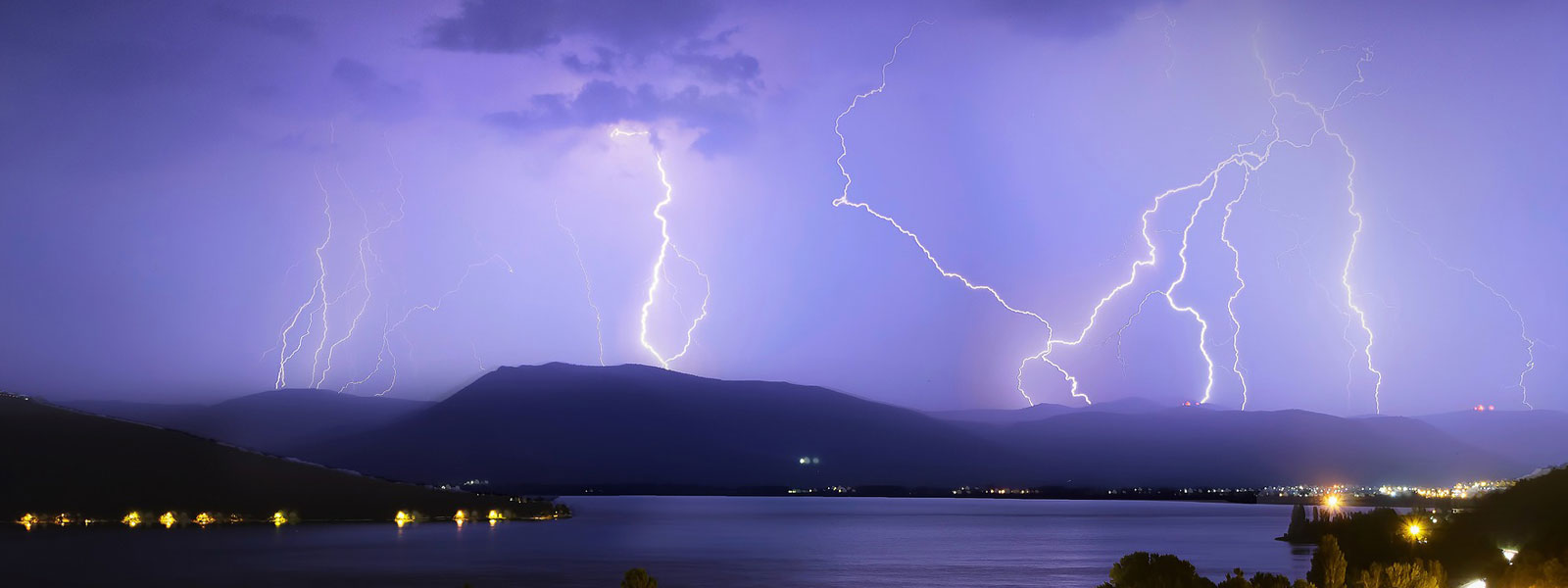LiRi is dedicated to improve the lightning phenomenon and physics knowledge, lightning protection good practices as well as research and development of new technologies.
+0 Md US$
of damage in the United States
+0°C
= 5% more severe thunderstorms
+0%
increase in Arctic lightning discharges by 2021
Certain atmospheric conditions, such as high temperature or humidity, lead to storm clouds being formed. These huge, anvil-shaped cloud masses are usually of the cumulonimbus variety, the lower part being made up of water droplets while at higher altitude are found ice crystals.
Strong up currents within this type of cloud cause the electric charge on the water droplets to be separated resulting in high levels of positive charge at the top and high levels of negative charge at the bottom of the cloud. Occasionally, a pocket of positively charged electrons is trapped low in the cloud within an area of negative charge.
A storm cloud forms overhead creating a vast dipole with the ground and, under the influence of the negatively charged cloud base, the ever present electric field in the atmosphere at ground level suddenly inverts and builds up rapidly reaching between 10 and 15 kilovolts per meter. An electrical discharge to the ground is then imminent.
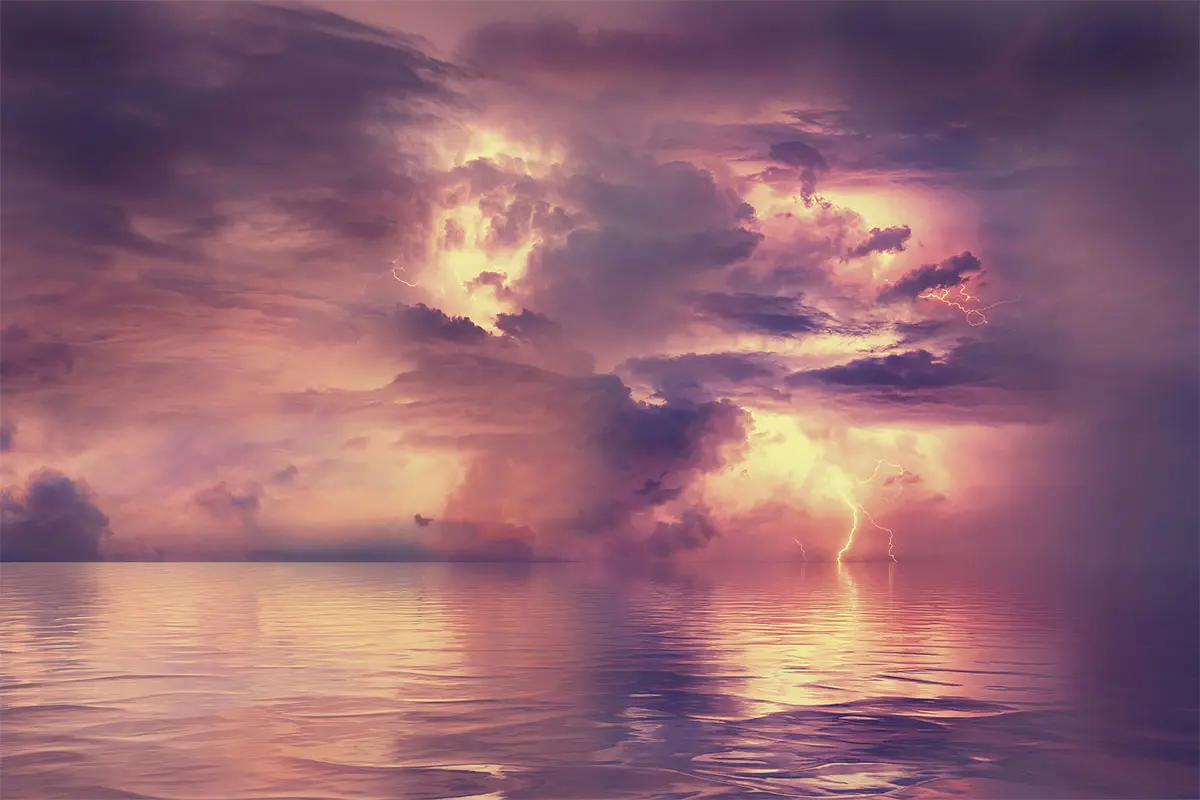
The first stage of a lightning strike involves an initial discharge of low luminosity known as a downward leader. It forms at the cloud centre and moves down toward the ground in steps of several dozen meters at a time.
At the same time, the electric charge in the atmosphere at ground level increases as the downward leader gets closer.
Any high point in the vicinity such as an electricity pylon or a lightning rod immediately gives rise to natural ionization in the form of a series of electrical discharges which are blue in color. This is the point effect or corona effect as observed by sailors during a storm, known as Saint Elmo’s fire, or by mountaineers who report hearing the characteristic humming of «bees» prior to a storm.
As soon as the downward leader is close enough to the ground, the ionization due to the corona effect intensifies, especially near any high point, and eventually turns into an upward discharge : this discharge is the upward leader that develops toward the cloud.
When one of these upward leaders comes into contact with the downward leader, a conductive path is created allowing a powerful current to flow. This is lightning and is characterized by its bright flash and the deafening sound of thunder.
The lightning strike may in fact be made up of a number of successive return strokes, only a few hundredths of a second apart, all following the same highly ionized path.
A very large majority of lightning discharges (approx 90%) are negative downward discharges : the negative-polarity charges are circulating from the bottom of the thunderstorm clouds to the ground.
Occasionally – usually during the winter – a downward leader may build up within a positively charged pocket in the base of the cloud and discharge down to the ground. This type of lightning is known as positive downward.
When electrical conditions in the atmosphere permit, an upward leader variety of lightning may shoot up spontaneously from a point of high altitude (e.g. a mountain peak, telecommunications tower or high building). The resulting lightning is known as positive upward or, less frequently, negative upward lightning depending upon the cloud’s electrical charge.
These upward lightning strikes current, usually positive, is more intense and therefore these discharges are more destructive than downward lightning strikes.
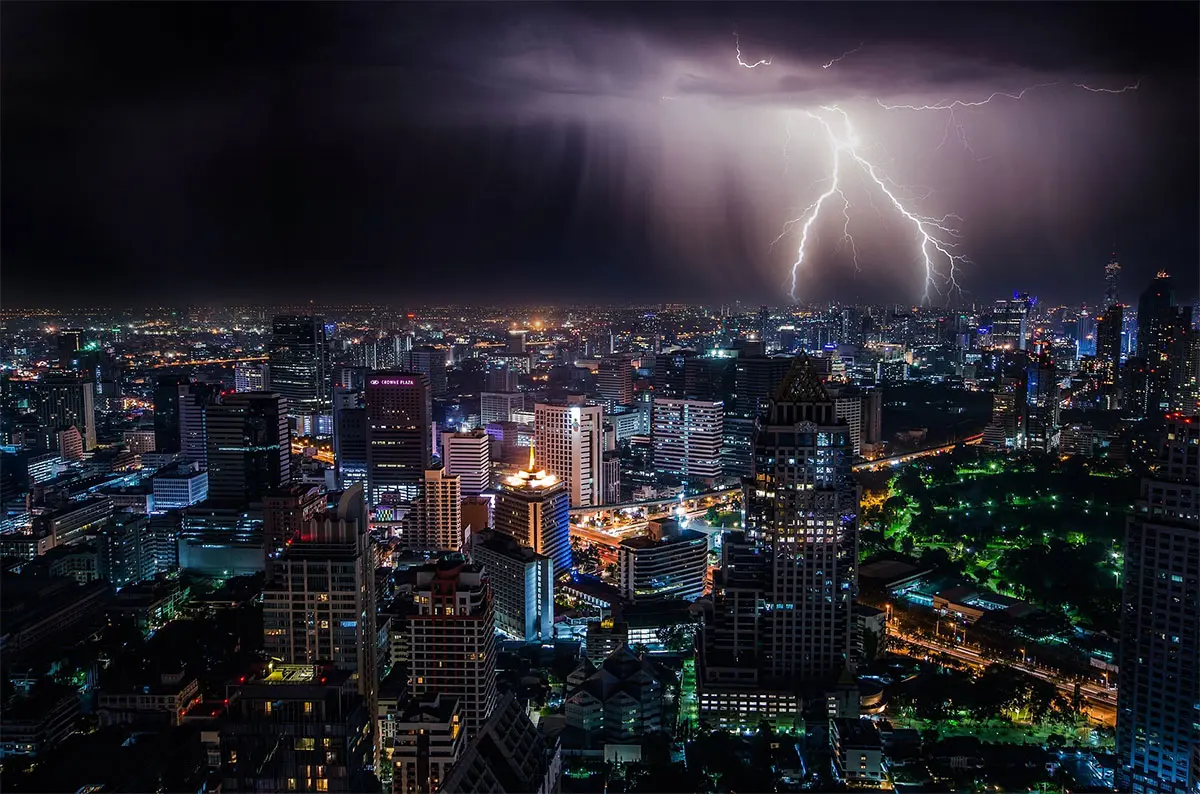
There are approximatively 32 million Cloud to Ground discharge per year in the world, ie. 50 to 100 Cloud to Ground discharges per second.
In 2016, The Insurance Loss due to lightning in the USA only are estimated at 825 million USD for homeowners (more than 100,000 claims) and 108 million for non-residential buildings.
Several websites such as http://www.struckbylightning.org/strike_database.cfm are compiling all lightning accident reports in a database.
The damages caused by lightning are very severe due to the lightning current specifications : very high intensity (several kA) and a current waveform with a very short rising time (steepness) that generate huge overvoltage transient currents: for example, the voltage generated in a 50m long copper strip (30mm x 2mm) reaches up to 10 MegaVolts based on the normative subsequent strokes characteristics (Level I).
Lightning frequency changes from a region to another around the world. The development of the lightning clouds (cumulonimbus) is favored by the large variations of temperatures in-between the ground (warm and humid) and the higher part of the atmosphere (cold). Lightning is concentrating around the tropics and limited to the summer season in temperate climates.
In 2017, scientists mentioned the Maracaibo Lake (Venezuela) as the most world lightning prone area.

Lightning data are indicating an increasing trend of lightning activity:
During the summer 2018, France witnessed a record 700,000 discharges.
On June 2018, more than 77,000 discharges were accounted in a single day over France.
From January to September 2018, there have been only 30 days without any lightning activity in France. Scientists have published in Nature review a survey demonstrating that 1°C of additional average temperature due to global warming equals to a 10% increase of the lightning activity.
With an estimated 2 to 4°C additional average temperature (according to the recent GIEC data), lightning activity and thunderstorms are very likely to escalate.
Another scientists team has also proven the link between air pollution and thunderstorms in the Malacca Strait (Malaysia): studying the 1.5 billion lightning events from 2006 to 2015 in the region, this survey establishes a relationship: the more polluted the air is, the more lightning are observed, due to the change of air composition and its conductivity.
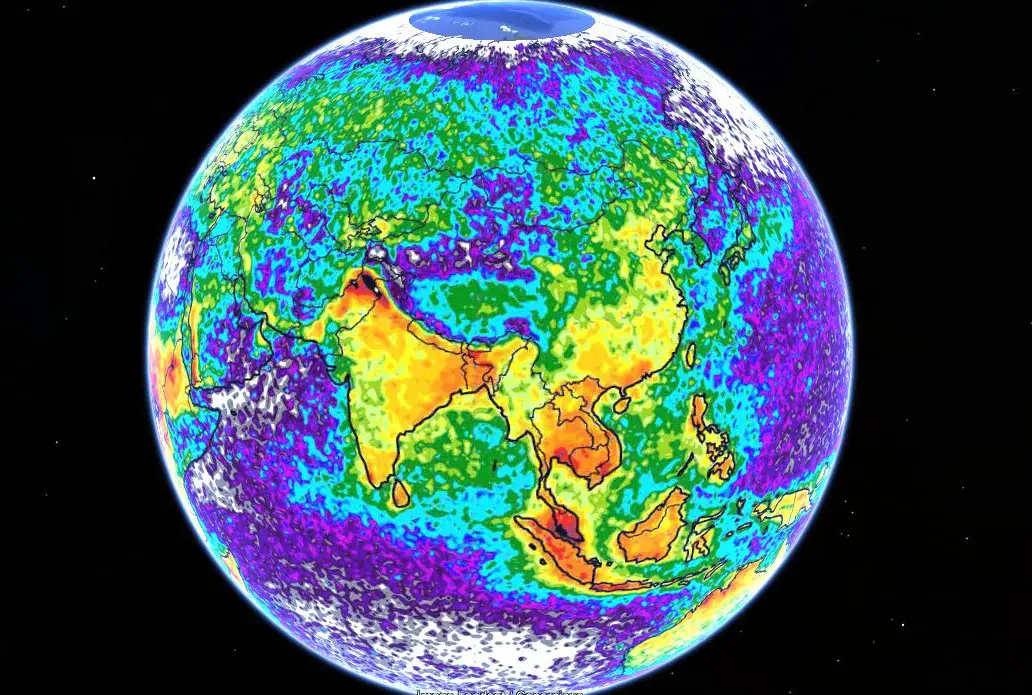
Lightning represents an attractive source of renewable energy, favoring the emerging countries from the tropical regions, very prone to lightning.
Nevertheless, there is no lightning current collection technology available.
- The first issue is the wide dispersion of lightning discharges to Ground. A one square kilometer area receives on average only one discharge / year (in Europe), up to 30/50 discharges par year for the most exposed areas.
- Second issue is the capacity to store a high impulse lightning current, due to its very specific waveform and very short duration.
Surveys are ongoing, with scientists testing laser beam ionizing a specific path to “conduct” the discharge to a specific collection point. But no operational system is yet available.
1753
Benjamin FRANKLIN invents the lightning conductor. He was the first to demonstrate the electrical nature of lightning with his now famous «kite experiment».
At more or less the same time in France, DALIBARD confirms the theory in Marly with his experiment with a metal rod which was electrified during storms.
Jacques de ROMAS also reaches this conclusion, with a different kite than FRANKLIN’s : a copper wire is winded around the rope to the ground The discovery rapidly lead to an extraordinary fascination for lightning conductors. They began to appear first of all on church spires and shortly afterwards on buildings.
1880
A Belgian physicist, named MELLSENS, recommends protecting buildings by covering them with metal wires connected to a series of spikes on the roof and then well earthed. This was the very first meshed cage.
1914
First attempts to improve on the single lightning rod by the Hungarian-born SZILLARD and the Frenchman, DOZÈRE. His works will lead to the design and manufacture of radioactive lightning rods, using radioactive sources around the tip of the rod to maintain a permanent ionization.
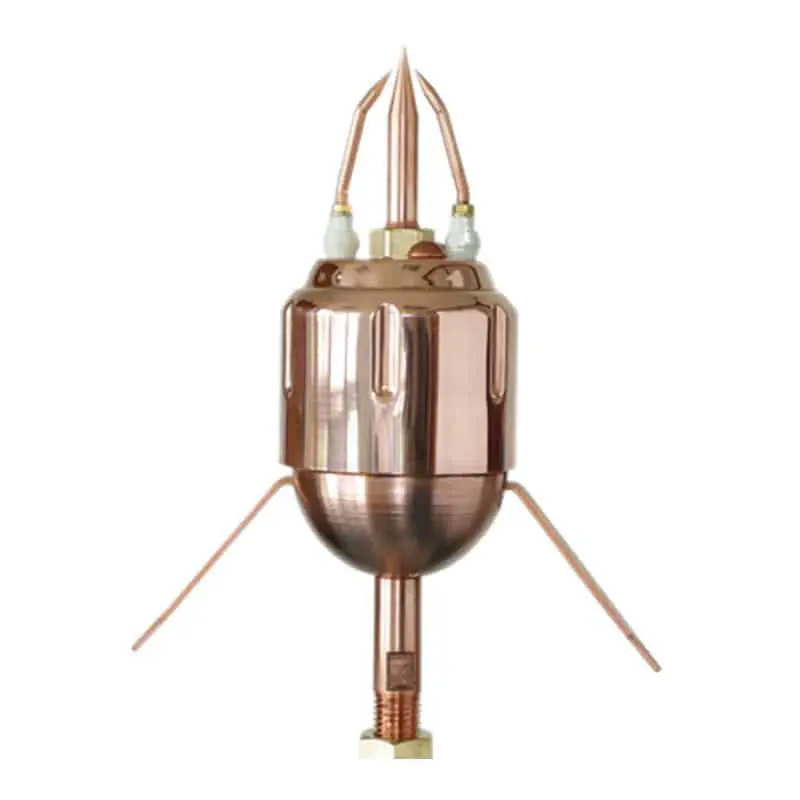
1985
For health safety considerations, radioactive lightning rods are banned.
Following several years’ research resulting in improved awareness of the physical properties of lightning, a new type of lightning conductor is developed giving stronger ionisation around the terminal through the use of electrical equipment independent of any external power source. This new technology is named “Early Streamer Emission” (ESE) lightning air terminals.
1995
Release of the French standard NF C 17 102 for “Lightning protection systems using Early Streamer Emission rods”.
This standard has been translated in a many countries and inspired several national standards in Spain (UNE 21 186), Portugal (NP 4426), Romania (I7), Argentina (IRAM 2426), Turkey, Angola, etc…
2015
The US corporation Underwriter Laboratories (UL) certifies Early Streamer Emission lightning rods and proposes inspection services for ESE lightning protection system installation.
2016
The International Lightning Protection Association (www.intlpa.org) accounts more than 680 000 Early Streamer Emission lightning air terminals installations worldwide.
- Shelter in a building / car
- Do no touch metallic objects/structural elements
- Do not use power supplied equipment and / or communication equipment
- Do not stay under a tree or in a cave in the mountains
- Safety position outdoor: stay in crouched position, two feet in contact with the ground, motionless
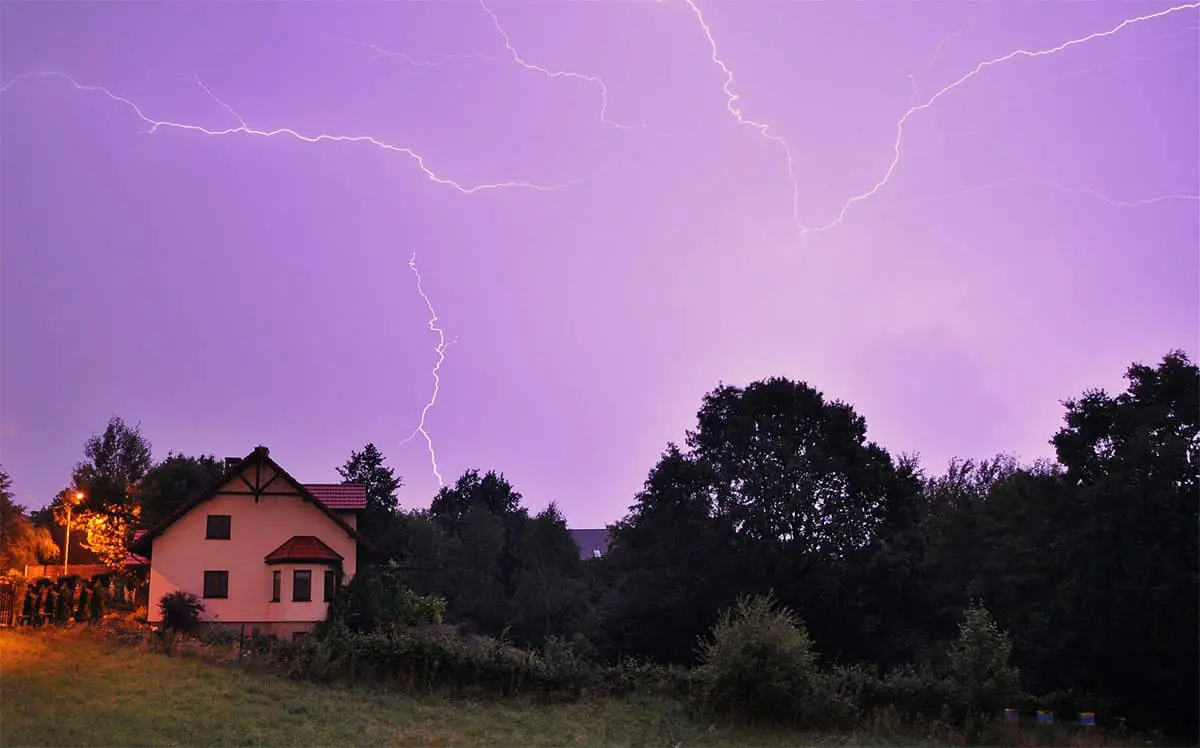
A Lightning Protection System is made of four main components:
- Direct protection includes the lightning rod(s) to capture the lightning curent and conduct it safely to the Ground through the conductors and earthing terminations
- Indirect protection gathers the surge protection devices on all the incoming networks (power, communication, data..) to protect the equipment
- Equipotential bonding of all the site grounding pits
- Equipotential bonding of all the metallic equipment / structures to the down conductors
There are four types of lightning rods :
- Early Streamer Emission air terminals since 1985
- Single Rod also named Franklin Rod based on Benjamin Franklin findings in 18th century
- Meshed Cage lightning protection design based on Faraday and Mellsens discoveries in 19th century
- Taut wires are very widely used for example above overhead power distribution lines (the additional metallic cable above the three active wires)
- Initially, a Lightning Risk Assessment survey is required to assess the requirement for a lightning protection system. The Risk Assessment will specify the protection level (1 to 4)
- Such surveys are conducted by dedicated Engineering Consultants, Qualifoudre certified (in France)
- The Technical Survey will then specify the type, the number and the location of the lightning rods above the structure
- The lightning air terminal must be fixed above the highest point of teh protected structure (ideally 5 meters above for an Early Streamer Emission lightning rod)
- The lightning rod must then be equipped with a minimum of two down conductors, fixed onto the building
- Each earth termination resistance should be measured with an Ohm-meter
- The resistance should remain below 10 ohms
- The lightning protection system earth termination and the building main earthing point should be interconnected by means of an underground conductive cable (earth loop)
- The system can be completed by a Lightning Strike Counter to record the number of lighting discharges received by the system
Standards - Lightning Protection System
France : NF C 17 102 : 2011
Protection against lightning: Early streamer emission lightning protection systems.
Spain : UNE 21186 : 2011
Protection against lightning: Early streamer emission lightning protection systems.
Portugal : NP4426 : 2013
Protection against lightning: Early streamer emission lightning protection systems.
Romania : I7 : 2011
Este normativ pentru proiectarea, executia si exploatarea instalatiilor electrice aferente cladirilor
Angola : 33 – 2014
Norma Angolana sobre proteção contra descargas atmosféricas
Argentina : IRAM 2426 : 2016
Pararrayos con dispositivos de cebado para la proteccion de estructuras y de edificios
Turquie : TS 13709 : 2016
Protection against lightning: Early streamer emission lightning protection systems.
Maroc : NM 06.1.050 : 2020
Protection against lightning: Early streamer emission lightning protection systems.
Serbie : JUS N. B4.810 : 2020
Protection against lightning: Early streamer emission lightning protection systems.
Macédoine du Nord : MKS N. B4.810 : 2020
Protection against lightning: Early streamer emission lightning protection systems.
Kazakhstan : GOST 34 696
“Early streamer emission lightning protection systems. Technical requirements and test methods”
Armenia : GOST 34 696
“Early streamer emission lightning protection systems. Technical requirements and test methods”
Kyrgyzstan : GOST 34 696
“Early streamer emission lightning protection systems. Technical requirements and test methods”
Uzbekistan : GOST 34 696
“Early streamer emission lightning protection systems. Technical requirements and test methods”
IEC 62305-1:2010 : Protection against lightning – Part 1: General principles
IEC 62305-1:2010 provides general principles to be followed for protection of structures against lightning, including their installations and contents, as well as persons.
IEC 62305-2:2010 : Protection against lightning – Part 2: Risk management
IEC 62305-2:2010 is applicable to risk assessment for a structure due to lightning flashes to earth. Its purpose is to provide a procedure for the evaluation of such a risk.
IEC 62305-3:2010 : Protection against lightning – Part 3: Physical damage to structures and life hazard
IEC 62305-3:2010 provides the requirements for protection of a structure against physical damage by means of a lightning protection system (LPS), and for protection against injury to living beings due to touch and step voltages in the vicinity of an LPS.
IEC 62305-4:2010 : Protection against lightning – Part 4: Electrical and electronic systems within structures
IEC 62305-4:2010 provides information for the design, installation, inspection, maintenance and testing of electrical and electronic system protection (SPM) to reduce the risk of permanent failures due to lightning electromagnetic impulse (LEMP) within a structure.
IEC 62 561 : 2017 – Connection components
Lightning protection system components (LPSC) – Part 1 : requirements for connection components
IEC 62 561 : 2018 : Conductors and earth electrodes
Lightning protection system components (LPSC) – Part 2 : requirements for conductors and earth electrodes
IEC 62 561 : 2017 : Isolating spark gaps (ISG)
Lightning protection system components (LPSC) – Part 3 : requirements for isolating spark gaps (ISG)
IEC 62 561 : 2017 : Conductor fasteners
Lightning protection system components (LPSC) – Part 4 : requirements for conductor fasteners
IEC 62 561 : 2017 : Earth electrode inspection housings and earth electrode seals
Lightning protection system components (LPSC) – Part 5 : requirements for earth electrode inspection housings and earth electrode seals
IEC 62 561 : 2018 : Lightning strike counters (LSC)
Lightning protection system components (LPSC) – Part 6 : requirements for lightning strike counters (LSC)
IEC 62 561 : 2018 : Earthing enhancing compounds
Lightning protection system components (LPSC) – Part 7 : requirements for earthing enhancing compounds
